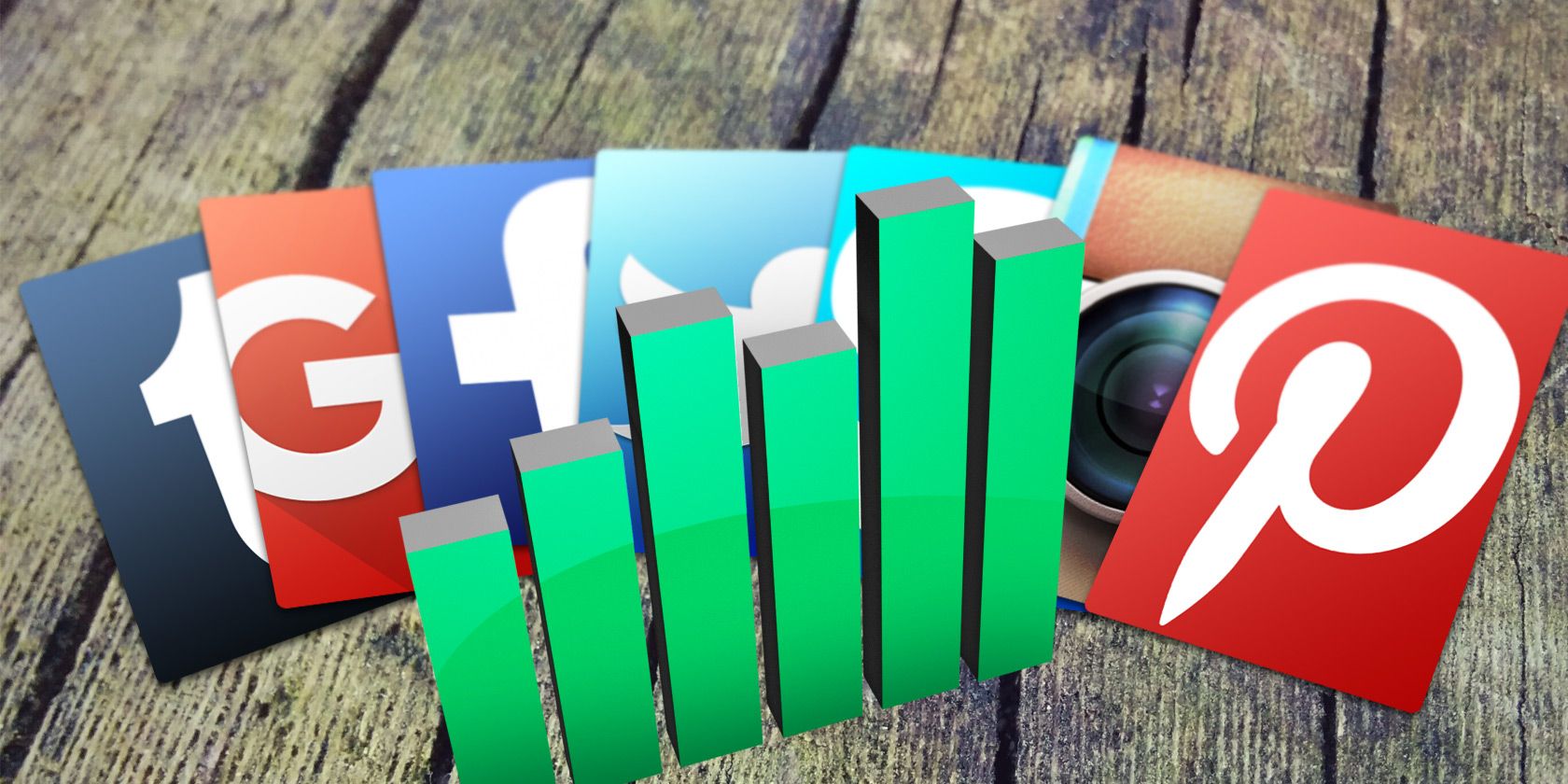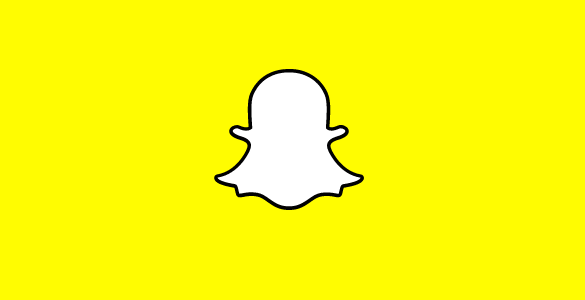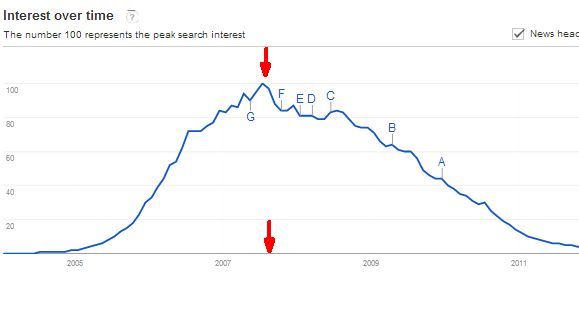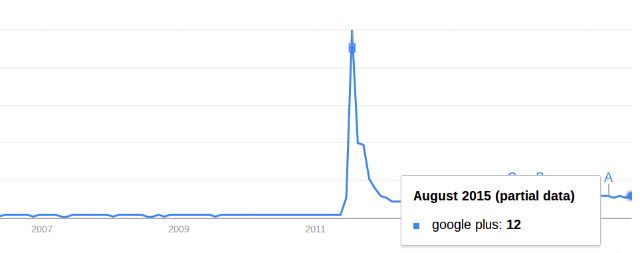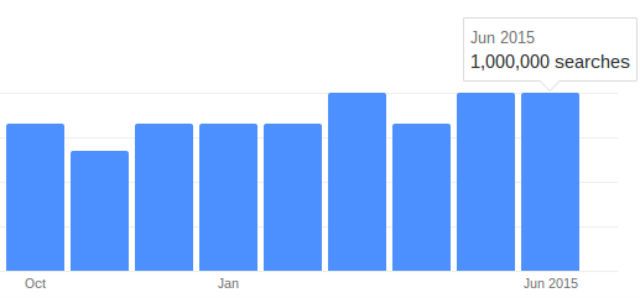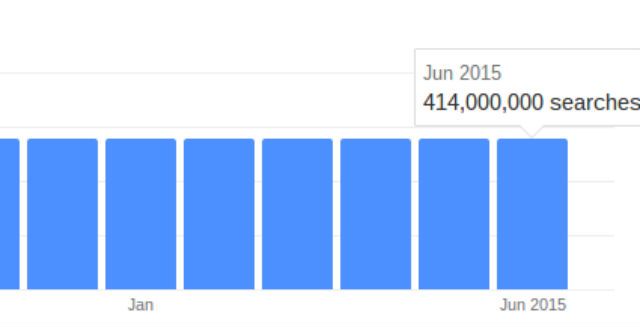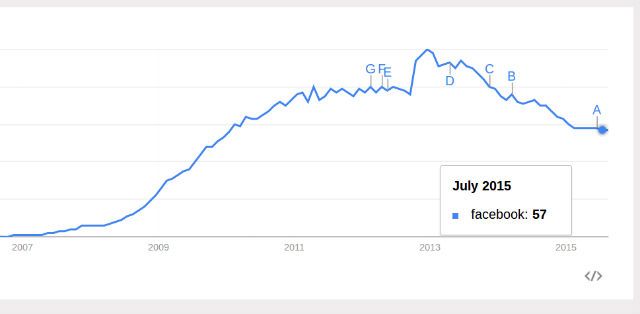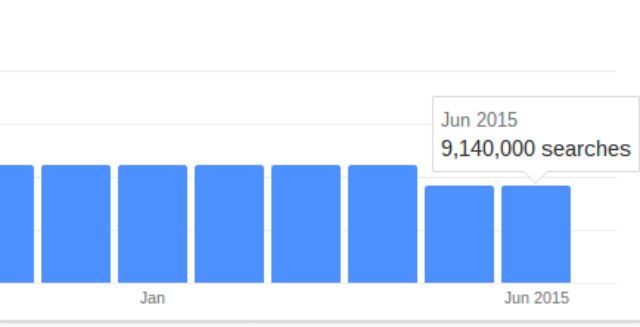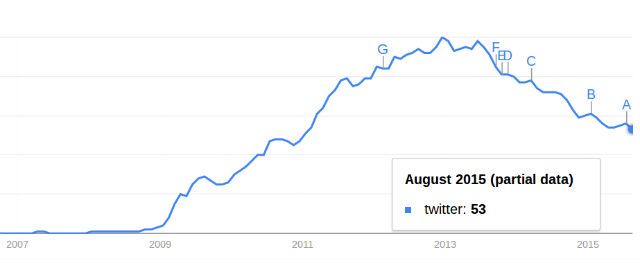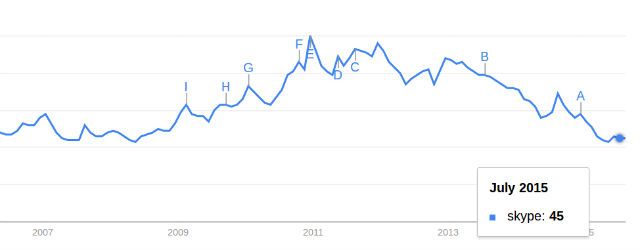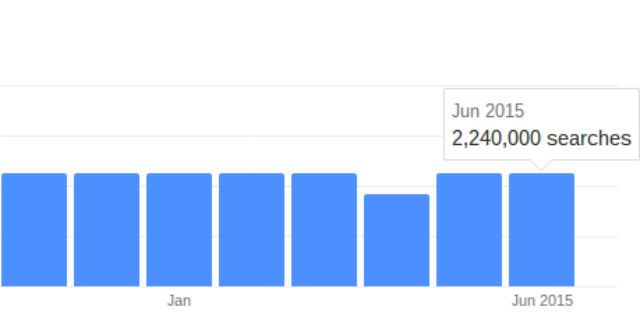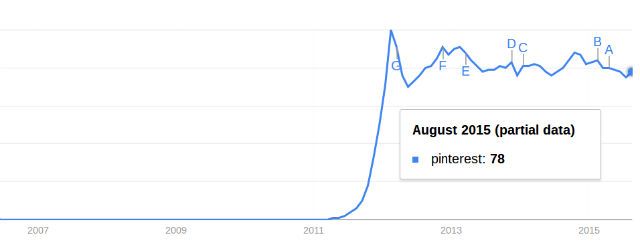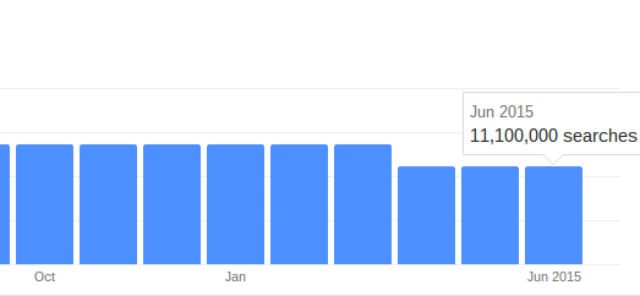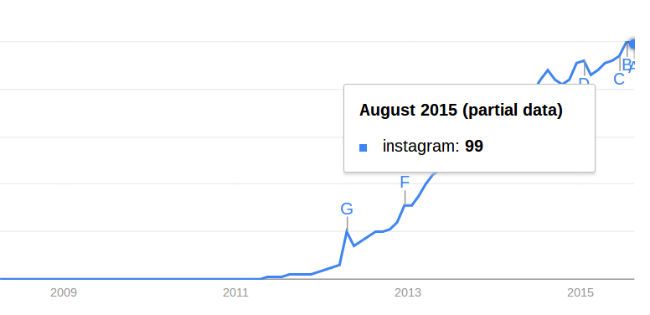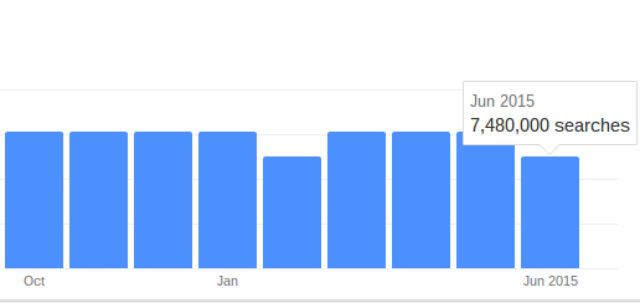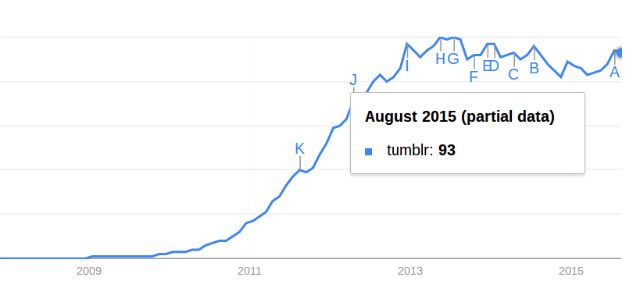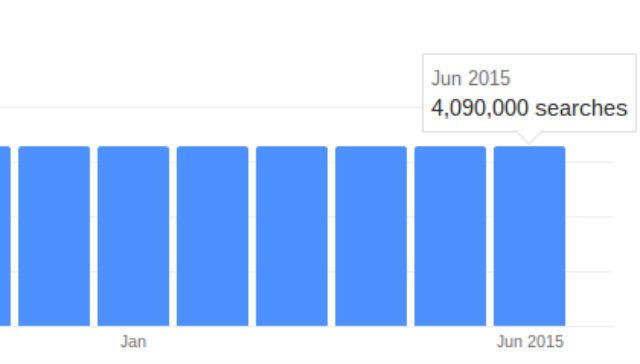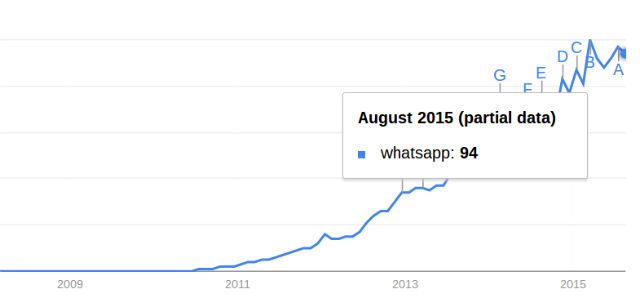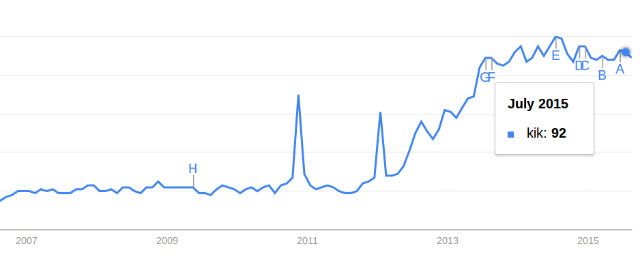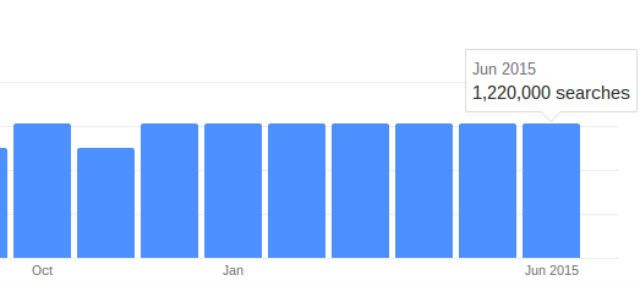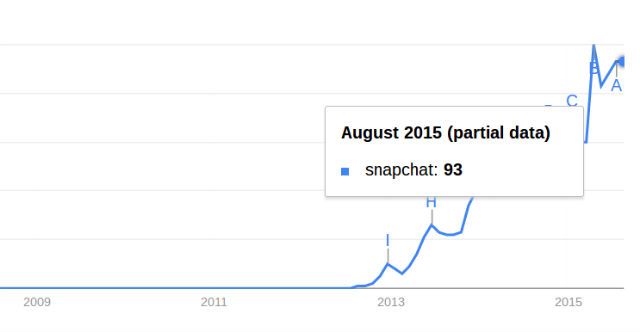The world of Internet communities and social networks is always in flux it seems, with brand new contenders entering into the fray every year. While Facebook holds the lion's share of the social market, new services like Kik, Snapchat, and WhatsApp threaten to break Facebook's stranglehold on the social Internet.
As evidence of just how dramatically the landscape changes, when I analyzed online services using Google Trends in 2013, the top contenders back then were primarily Facebook, Google+ and Twitter. IM services like Google Talk and Facebook Chat (this was before Facebook Messenger) were head-to-head, and Skype was the clear king of instant messaging.
These days, hardly any of that is even relevant anymore. Skype has lost massive user base to the new IM players on the market, and there has been a migration of teenagers and young adults from Facebook to services like Snapchat and Twitter that offer faster, more real-time communications with friends and followers.
Social Network Popularity
There are countless ways to judge which social networks are more popular. You could pull up the number of registered users for each service, and base your analysis on those trends. While this may tell you how fast each service is growing, it doesn't say a whole lot about how "popular" these services are across the Internet — who's talking about them and how often users are looking for more information about how to use the service.
Two of the best tools that reveal the Internet popularity of anything at all is Google Trends and Google Adword tools. An example I often provide of this is how the Google Trends chart provides a perfect timeline of the rise and fall of MySpace.
This trend perfectly outlines the lifespan of the service, with its peak in popularity occurring toward the end of 2007, and ending after 2010 once Facebook and Twitter took over.
This textbook "life-cycle" chart is an important chart to keep in mind as we analyze the trends of today's most popular social networks and social IM tools. Let's see where today's social networks are in their own "life-cycle".
Google+
Ah, the rise and fall of Google Plus is the usual tale of a concerted effort by a powerful organizing to force something to be popular — but when it comes to social media, if the magic isn't there, it just isn't happening. And it isn't really fair to call it the "rise and fall" of Google Plus, considering that the rise never really happened at all.
Sure, there was a sudden spike in interest after June of 2011 when the service was launched, but just as fast as the interest arrived, it disappeared. There wasn't the slow and steady climb of a social network making its popularity known through word-of-mouth from one person to the next. Instead, there was the flat nothingness of advertisements and failed marketing.
Four years later, the online interest (web searches) in Google plus is just 12 percent of its highest point ever, and there's no sign that it'll ever come back. Especially now that Google officially gave up on its own social network.
There is still a moderately okay search volume of 1 million searches a month for information related to Google Plus, but this is sure to decline soon enough, as general online interest turns toward the online social networks that continue to grow in popularity — see below.
Facebook is still the king when it comes to social. However, starting in 2014, there has been a slow but steady decline in interest in all things Facebook. The network size isn't shrinking — the user base by mid 2015 is about 1.5 billion — and there are over 414 million searches for information about Facebook, according to Google Adwords.
But how many of those accounts are actually very active is debatable, and when you look at the online search trend for information about Facebook, you'll notice that the chart looks a bit like three-quarters of what the final MySpace "life-cycle" chart looked like.
Does this mean that Facebook is now in the same downward slope that MySpace was in during the final years of its life cycle, when people were still claiming that MySpace was far too big to ever die? It's quite possible, especially when you look at how the younger use base is fragmenting to the other, newer social networks and tools — and how their preferred social behavior online is changing in a way that Facebook's platform just doesn't quite satisfy.
The truth is that more of the younger online audience prefers Twitter over Facebook now, for several very important reasons that we'll be going over.
The investment management firm Piper Jaffray produces a semi-annual teen market report, and the 2013 report showed that 26 percent of the teens preferred Twitter, while 23 percent preferred Facebook.
This was a shift from just one year earlier in 2012 when a whopping 42 percent of teens preferred Facebook over Twitter. The fact is that there's something about Twitter that teens prefer.
Twitter search volume shows the Twitter stands as the second most popular social network on the web. No surprise there.
Interestingly, when you look at the historic web trends for searches about Twitter, it also looks like Twitter is on the downside of its own "life-cycle" as well. Twitter is currently at 53% of its all-time high popularity online at the start of 2013.
As a result of these numbers, many online social network pundits and marketers have claimed that social is useless as a resource to connect with consumers.
Earlier this year, Matt Kapko at CIO.com wrote:
"Savvy companies could start to put significantly less focus on social engagement in 2015 and redistribute their efforts toward achieving demonstrable mission-critical sales goals and other objectives."
This dismissal of social engagement as an important business metric is a failure on the part of older marketers and business owners who are disconnected from the reality of what the Internet has become, and where the young audience that is leaving Facebook is going. Some are going to Twitter, but clearly — as the online popularity trend above shows — many of them are going somewhere else.
While teens may not determine whether or not the established social networks like Facebook or Twitter eventually rise or fall, but they typically do predict what the next "big thing" is going to be.
To understand what that is, it's important to look at the social landscape beyond Facebook and Twitter.
Skype
What seems to be happening is that teens are migrating over to platforms that offer a more real-time experience on the web. Teens want instant communication — at least more instant than posting to a Facebook wall and waiting for someone to answer. Maybe even more real-time than a Twitter conversation.
Beverly Macy, the CEO of digital media strategy firm Gravity Summit wrote an op-ed for Huffington Post where she explained this current trend toward real-time social experiences.
"Twitter sits comfortably as everyone's real-time news and trends tracker -- whether for sports games, public health emergencies (Ebola), or the upcoming mid-term elections. And, yes, Instagram, Snapchat, WhatsApp, WeChat, Tinder and more are alive and well with new innovations right behind them. Real-time is the new reality."
Teens are online constantly, whether on their laptop, tablet or smartphone. There is really no space in the teen's modern life where there's no Internet, other than when they take a shower, and even that may change once the Internet of Things takes hold.
So, it's no surprise that even though the old-school social networks are on a slow, downhill trend, the same isn't true for Skype.
Skype popularity is as strong today as it was back in 2009. It definitely isn't seeing the same growth that it did from 2009 through 2012, but that could be due to the many new real-time social apps that are now available to teens as an alternative.
To put the strength of those alternatives into perspectives, it's important to look at the search volume for information about Skype — a volume that currently stands somewhere between 2.1 to 2.2 million searches a month.
Keep that number in mind as we examine some of the other new real-time social apps now in the social world.
It's interesting to look at Pinterest's popularity as compared to that of other social sites, because it doesn't have the same gradual growth, but it also hasn't had any decline in popularity since it was first launched.
This may have to do with the fact that it isn't the traditional form of social networking, and it has a very specific purpose that appeals to a certain subset of Internet users — those who prefer the experience of browsing ideas and information in a more visual way.
Interest is quite strong with Pinterest, and it has no sign of abating — with search trends surpassing over 11 million a month, it looks like Pinterest may be around for the foreseeable future.
This may also be due to the fact that it has little competition. It isn't attempting to serve as a direct social experience where you communicate with others, but it does lead to a growing "following" of users with common interests. It also doesn't compete with social apps that appeal to the "real-time" social experience, because its purpose is the sharing of ideas and common interests, not as a communication platform.
Instagram, however, is directly in the realm of real-time communication, and serves the needs of teens that are looking for this kind of thing.
From 2012 through 2015, it becomes quite obvious that Instagram is one of those places where teens who were formerly on Facebook, are now migrating to.
And if you look at the overall search volume of people on the web who are looking for information about Instagram, it reveals that Instagram is at least 3 times more popular than Skype.
This trend shows that the online behavior of teens is focused on a mobile experience — one where real-time video chatting might consume too much bandwidth, but where snapping and transmitting a picture via Instagram is fast, convenient, and consumes very little data.
Tumblr
Like Pinterest, Tumblr is another online service that seems to have its own niche in the social media world. It is almost a combination of the visual component of Pinterest and the real-time component of Twitter. Tumblr's collection of videos, short text posts, GIFs and Quotes is almost like a Swiss Army knife social experience that appeals to those who want a little bit of everything.
It's clear that Tumblr is doing a good job appealing to its users, as its popularity — like Pinterest — has remained solid since 2013.
Unlike Twitter or Facebok, there's no current downward trend in online interest, which may mean that like Pinterest, it's still at the early stages of its life-cycle, with no sign of abating any time soon.
Based on search volume alone, it's about twice as popular as Skype, but half as popular as Instagram.
From the early days of smartphones, there used to be lots of stories about teens racking up hundreds of dollars worth of cellular surcharge bills just from sending too many text messages to friends. The answer to this dilemma was a smartphone-based service called WhatsApp messenger that would let teens text their friends to their heart's delight, so long as the service didn't consume more than the cellular data plan allowed for. These days, that's usually more than enough reason for teens (and many others) to prefer this service over standard text messaging.
The popularity of this service, on a steep growth trend since 2012, proves what Beverly Macy wrote in Huffington Post about real-time being the new reality. As you'll see below, this pattern holds true for each of the most popular social apps or sites today that are most popular with teenagers.
With that said, there's still a long way to go before there's widespread adoption of these apps. Early this year, the service passed the 450 million user mark (more than Twitter) — so it's certainly here to stay.
Kik
Kik is another SMS alternative solution like WhatsApp, offering teens another IM alternative — and these days it's one of the more trendy alternatives to WhatsApp or Facebook Messenger. It also has the secret ingredients that make it popular with teens; it offers real-time communications, and it's accessible via any mobile platform. The trends from 2013 through 2015 prove this out as well.
The Kik user base is 100 million users, which is triple what it was a year ago, and the trend continues. Kik is even more popular across the web, with over 1.2 million web searches about Kik taking place every month
It doesn't take a fortune-teller to see the trend — that teens are looking for instant gratification when it comes to the social experience, and they prefer to have the option to do it from anywhere, and from any device.
Snapchat
Another popular service that fills the same need as WhatsApp and Kik is Snapchat — another instant messaging service that has the added feature of "self-destructing messages".
Snapchat launched a bit later than most of the other SMS-alternative services out there, but the timing was perfect, and the privacy feature of disappearing messages made it take off like a vengeance with teens. It's also the most popular of the three, with 1.5 million searches about Snapchat taking place online every month.
Snapchat has about 60 million installs, and 30 million active users. This may seem small, but it's larger than Instagram was when Facebook bought it for $1 billion.
Social Isn't Dead, But It's Changing
Pew Research published Teens, Social Media & Technology Overview 2015, which revealed that 71% of teens surveyed still use Facebook, but what's interesting is that the same percentage of teens use more than one social network, beyond Facebook. 52% of teens use Instagram, 41% use Snapchat, 33% use Twitter, and 14% use Tumblr.
This diversification of social activity use online by the younger generation will likely contribute to the continued growth of these other networks and messaging services in future years, and if the trends above are any indication, the entire social landscape may look very different in ten years than it does today.
In addition to all of the social networks above, you also have region-specific ones like the Facebook of Russia, VK.

